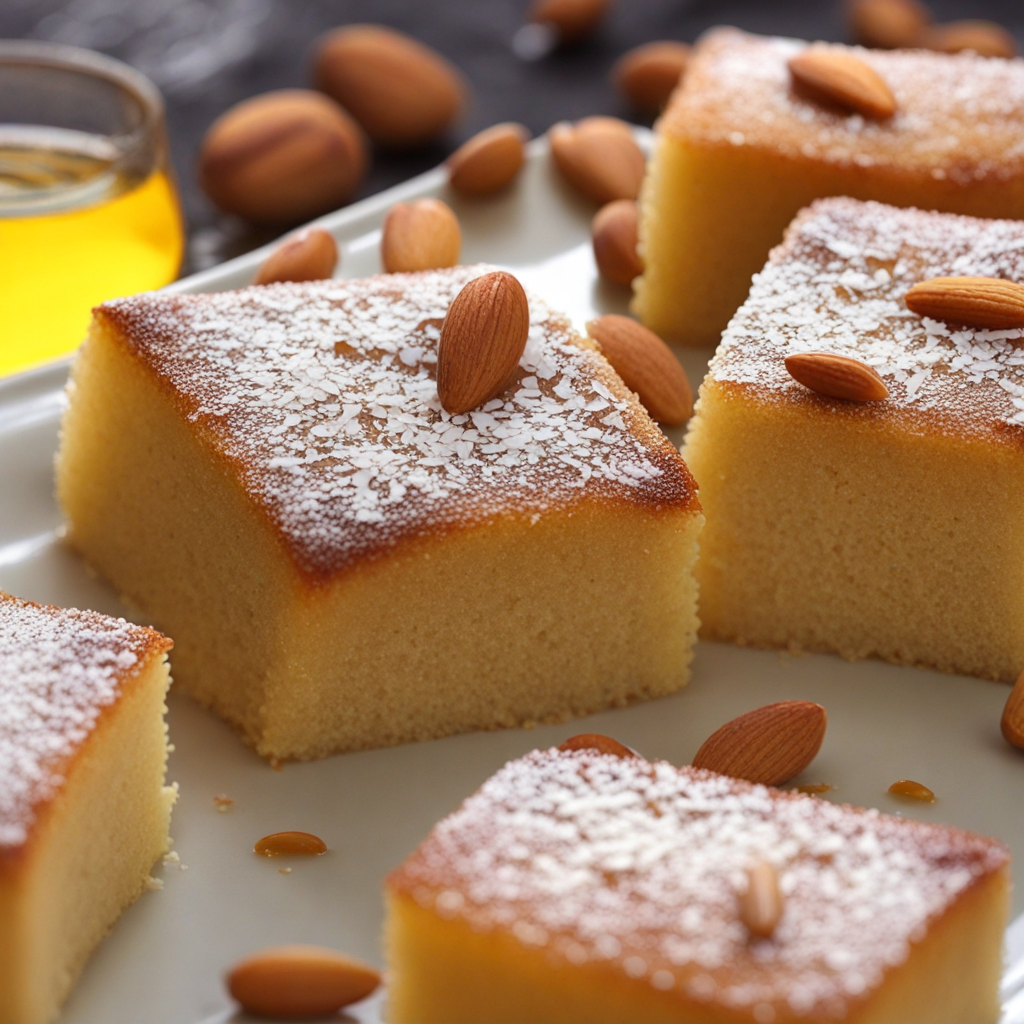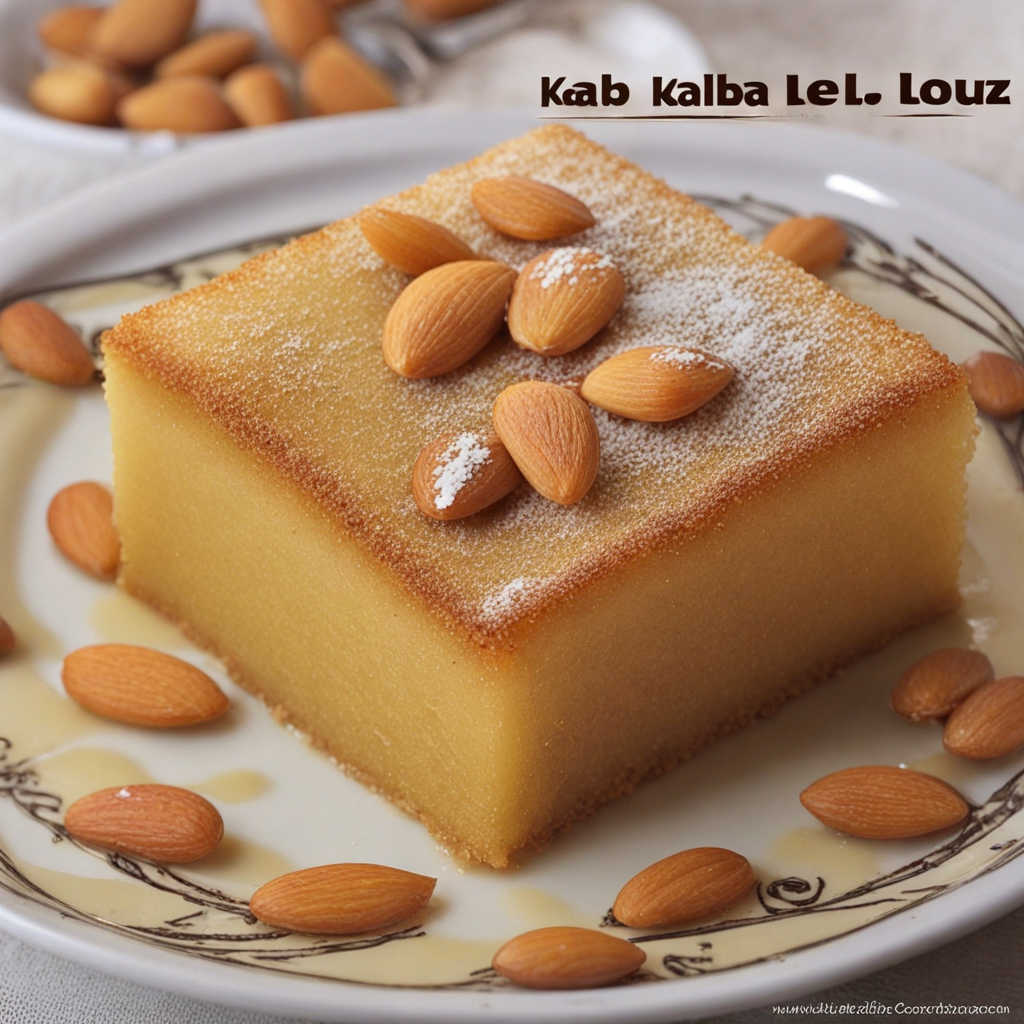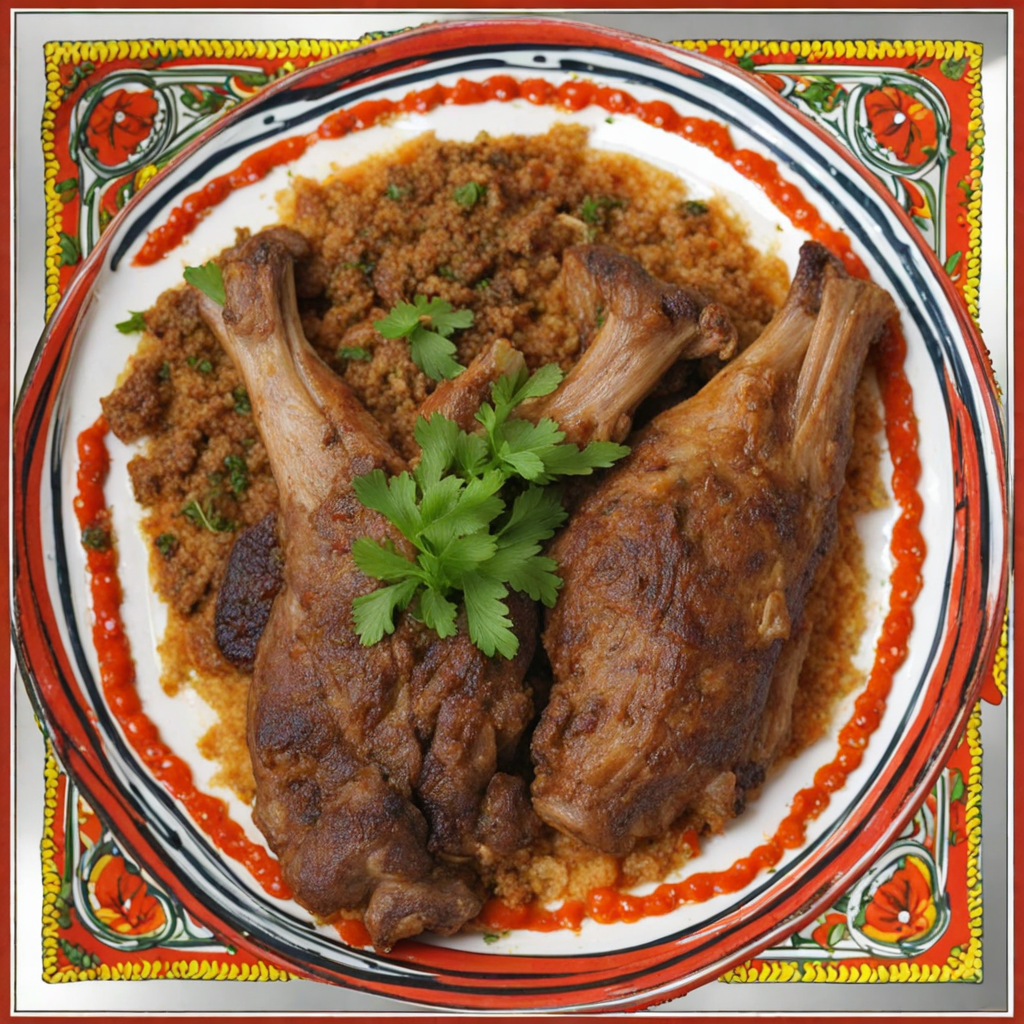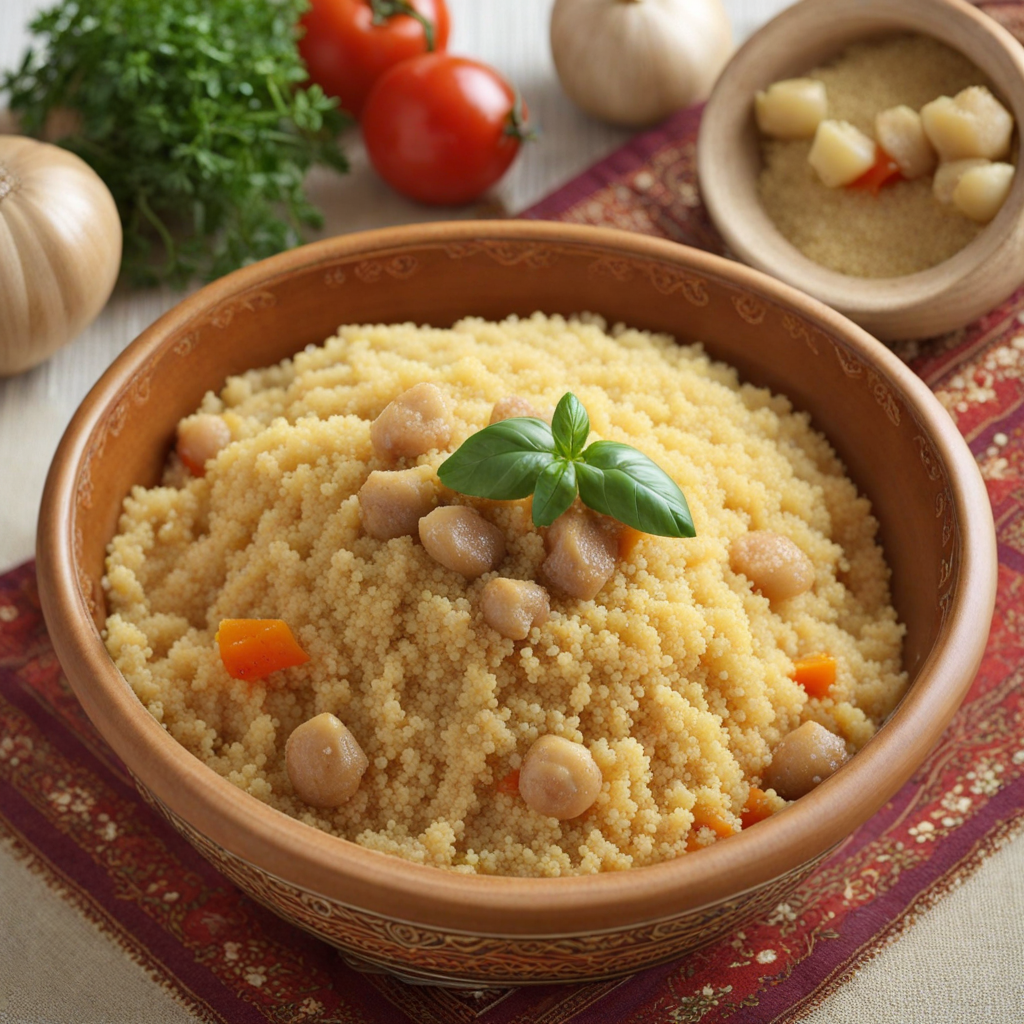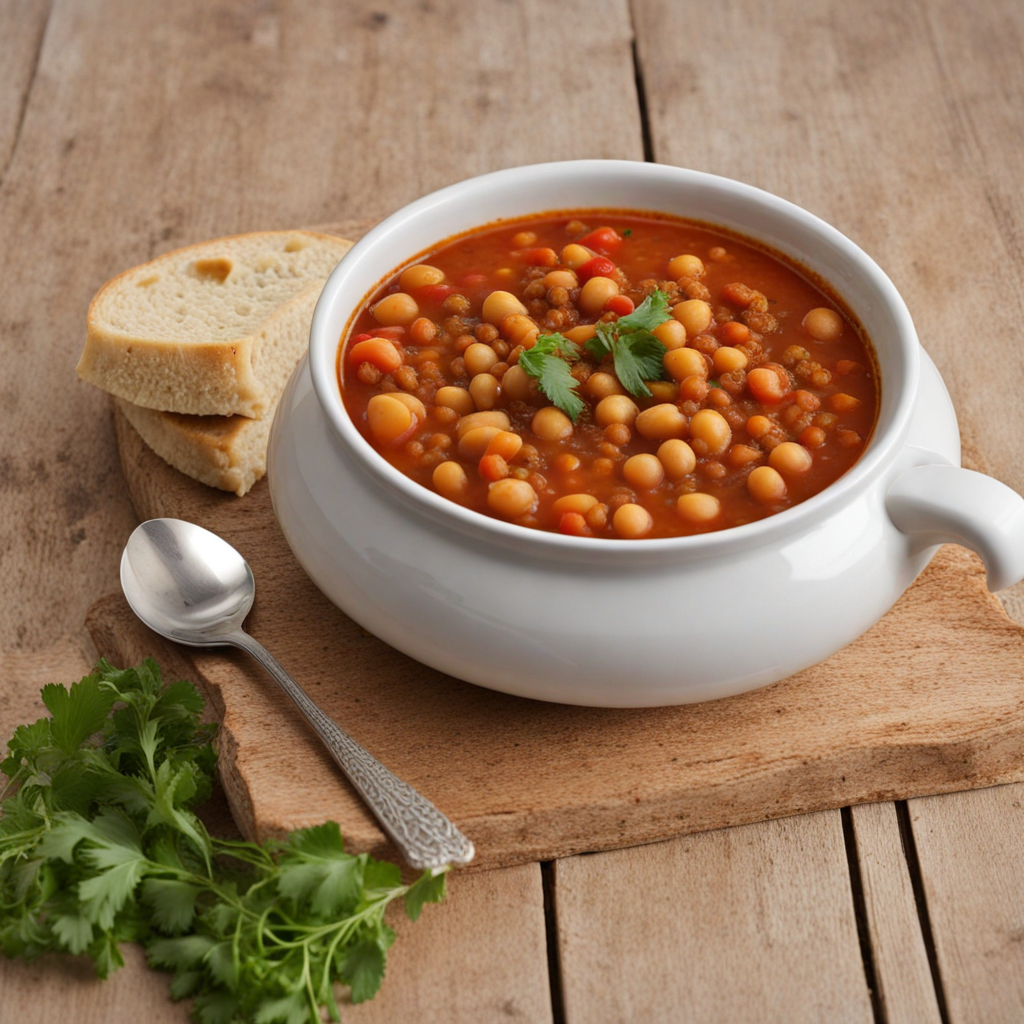Kalb el louz
Kalb el louz is a traditional Algerian dessert that embodies the rich culinary heritage of the region. This delightful dish is primarily made from semolina, sugar, and almond, resulting in a sweet, moist texture that melts in your mouth. The semolina is often soaked in a fragrant syrup, typically flavored with rose water or orange blossom, which adds a floral note to the dish. The combination of these ingredients creates a unique taste profile that is both comforting and exotic, making it a cherished treat during special occasions and celebrations.
The preparation of Kalb el louz involves layering the semolina mixture, which is sometimes enriched with ground almonds or pistachios, and then baking it to achieve a golden crust. After baking, it is drenched in the aromatic syrup, allowing the flavors to meld beautifully. The dessert is often cut into diamond or square shapes and garnished with slivered almonds or pine nuts, providing a delightful crunch that contrasts with the soft, moist base. Each bite is a harmonious blend of sweetness and nutty depth, making it a truly indulgent experience.
How It Became This Dish
The History of قلب اللوز (Qalb al-Louz) from Algeria #### Origins of Qalb al-Louz Qalb al-Louz, which translates to "heart of the almond," is a traditional Algerian dessert that embodies the rich cultural tapestry of North Africa. This delectable sweet is made primarily from ground almonds, sugar, and semolina, often flavored with rosewater or orange blossom, and sometimes adorned with a dusting of powdered sugar or a drizzle of syrup. Its origins can be traced back to the Moorish influences that permeated Algeria, particularly during the medieval period when the region was a melting pot of various cultures, including Berber, Arab, and Andalusian. The story of Qalb al-Louz is inherently linked to the history of almonds in the Mediterranean. Almonds were cultivated extensively in the region, likely introduced by the Phoenicians and later popularized by the Moors. They became a staple ingredient in both sweet and savory dishes. The combination of almonds with sugar and other fragrant elements reflects the medieval practice of creating desserts that were not only delicious but also visually appealing, often served at feasts and celebrations. #### Cultural Significance Qalb al-Louz holds a special place in Algerian culture, often served during significant occasions such as weddings, religious celebrations, and family gatherings. Its preparation is sometimes seen as a communal activity, bringing families together to share recipes and techniques, thus preserving traditions across generations. The dessert symbolizes hospitality and generosity, qualities highly valued in Algerian culture. The name "Qalb al-Louz" itself carries a poetic resonance, evoking the heart shape of the dessert, which is typically cut into diamond or square shapes. This shape is not merely aesthetic; it signifies love, warmth, and the emotional ties that bind families and friends. The dessert's delicate flavors and textures also reflect the nuanced approach to food in Algerian cuisine, where tastes and aromas are carefully balanced to create harmony on the palate. #### Development Over Time Throughout the centuries, Qalb al-Louz has evolved, influenced by various historical events and culinary trends. The Ottoman Empire, which ruled over Algeria from the 16th century until the 19th century, contributed to the diversification of local cuisine. Ingredients such as sugar and spices became more accessible, leading to the development of richer and more complex desserts. The Ottomans had their own interpretations of almond-based sweets, which likely influenced the regional variations of Qalb al-Louz. In the 19th century, the French colonization of Algeria brought significant changes to the culinary landscape. French pastry techniques and ingredients began to permeate local traditions, leading to new interpretations of traditional desserts. This period saw the introduction of refined sugar production and the proliferation of baking styles, which further enhanced the texture and presentation of Qalb al-Louz. Despite these influences, the dish retained its core identity, remaining a quintessential part of Algerian celebrations. In contemporary Algeria, Qalb al-Louz continues to be a cherished dessert, beloved for its nostalgic flavors and cultural roots. Its preparation can vary from family to family, with some using different combinations of nuts, including pistachios or walnuts, while others might incorporate local herbs or spices, reflecting the dynamic nature of Algerian cuisine. Modern chefs also experiment with the dessert, presenting it in innovative ways that maintain its traditional essence while appealing to contemporary palates. #### Ingredients and Preparation The traditional recipe for Qalb al-Louz involves a few key ingredients that contribute to its unique flavor. Ground almonds are the star of the dish, lending a rich, nutty flavor and a smooth texture. Semolina adds a slight coarseness, creating a delightful contrast that elevates the overall experience. Sugar is essential for sweetness, while rosewater or orange blossom water provides a fragrant note that complements the nuttiness of the almonds. To prepare Qalb al-Louz, the ground almonds and semolina are mixed with sugar, water, and the fragrant essence, forming a thick batter. This mixture is then poured into a greased baking dish, often layered with a syrup made from sugar and water, which helps keep the dessert moist and adds an extra layer of sweetness. The dessert is typically baked until golden brown, then cut into diamond shapes and garnished with powdered sugar or nuts. The simplicity of the ingredients belies the complexity of flavors achieved through careful preparation. The baking process allows the flavors to meld, creating a comforting and nostalgic dish that resonates with many Algerians, whether they are enjoying it at home or celebrating a special occasion. #### Contemporary Relevance In recent years, there has been a renewed interest in traditional Algerian cuisine, including desserts like Qalb al-Louz. Chefs and home cooks alike are celebrating the importance of culinary heritage, emphasizing locally sourced ingredients and traditional techniques. This revival comes alongside a growing appreciation for the stories behind the food, where each dish represents a connection to history, culture, and community. Qalb al-Louz is increasingly featured in food festivals, culinary workshops, and social media platforms, where food enthusiasts share their interpretations and family recipes. This trend not only preserves the dish's legacy but also introduces it to a broader audience, allowing it to transcend geographical boundaries. As people explore the flavors of Algeria, Qalb al-Louz stands out as a symbol of the country’s rich culinary heritage. #### Conclusion The history of Qalb al-Louz is a testament to the resilience of culinary traditions in the face of change. From its Moorish origins to its contemporary interpretations, this almond-based dessert encapsulates the essence of Algerian culture—its flavors, aromas, and communal spirit. As the world becomes increasingly interconnected, the stories and recipes surrounding Qalb al-Louz continue to inspire and unite, ensuring that this heartwarming dish remains a beloved part of Algeria's gastronomic narrative for generations to come.
You may like
Discover local flavors from Algeria


